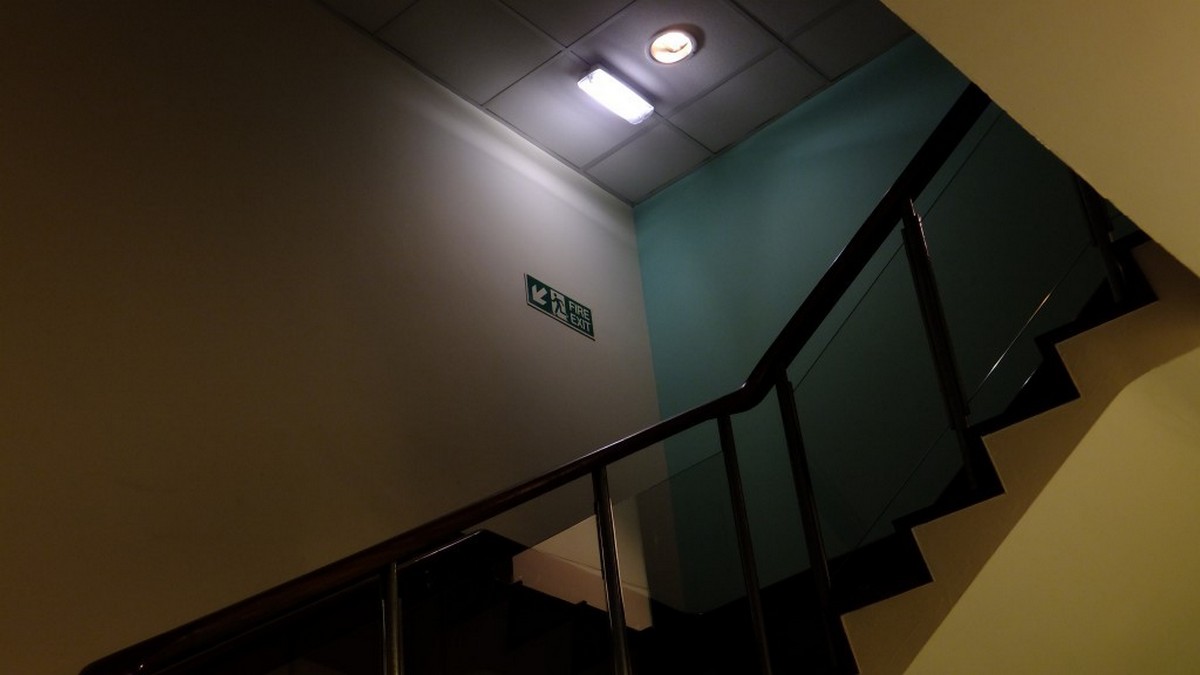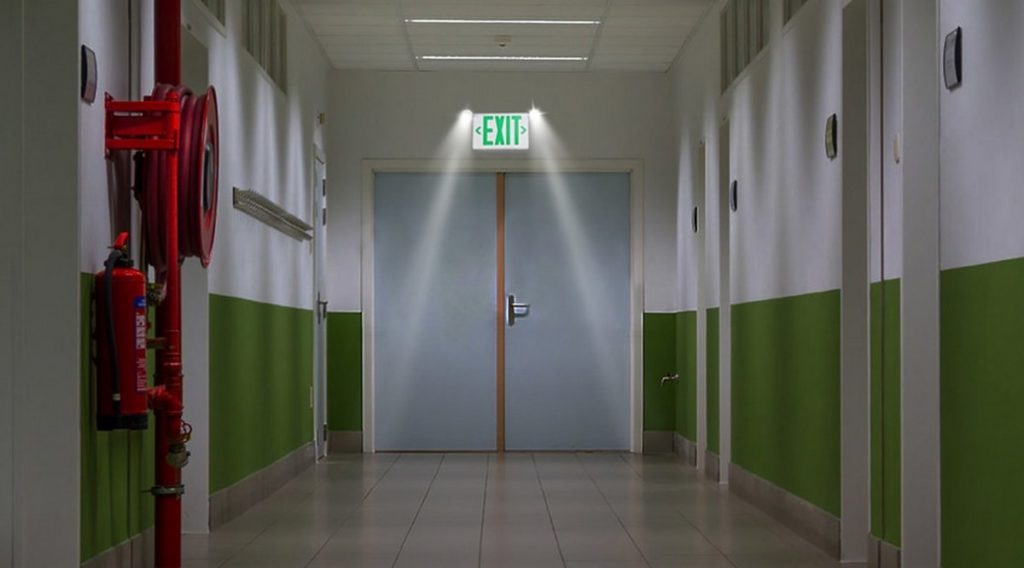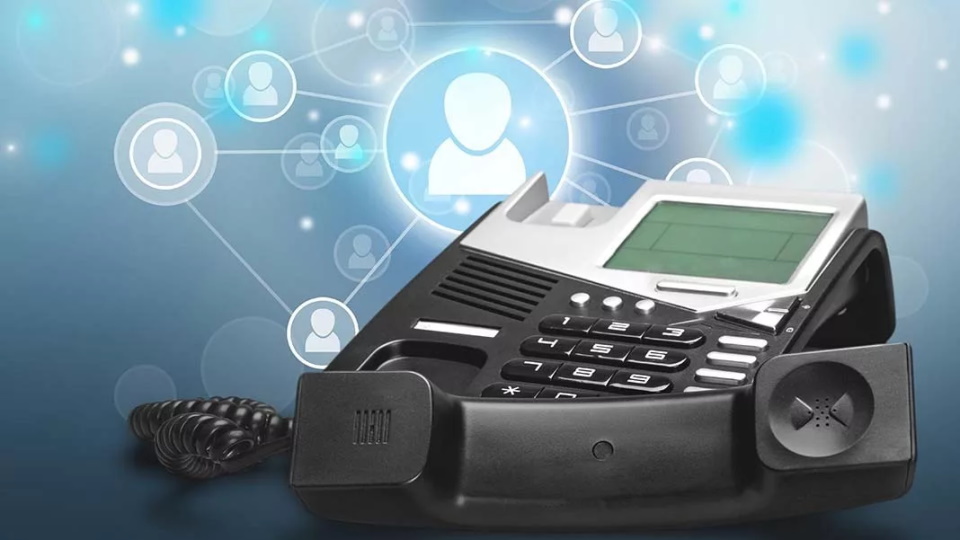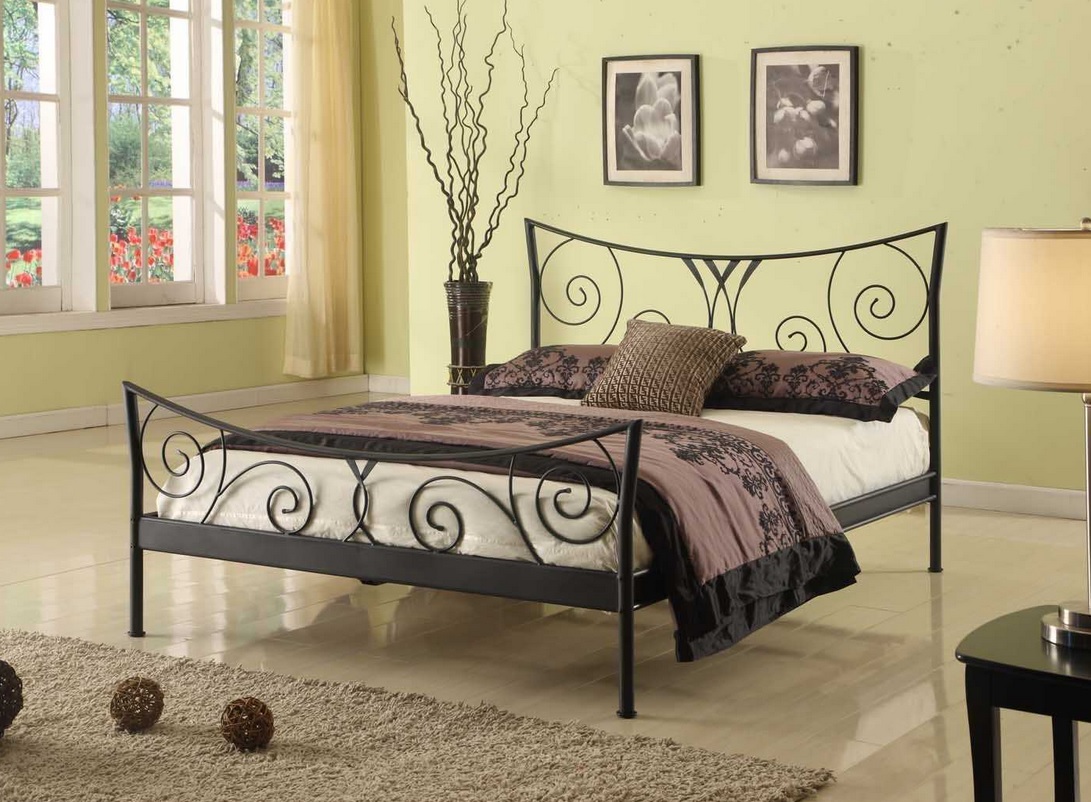Ranking of the best emergency lights for 2025

Emergency lighting luminaires (emergency luminaires, abbr. "AS") today have become a mandatory attribute of any room with a mass stay of people, which is a direct requirement of the current legislation. They are intended for the safe and speedy evacuation of people in case of emergency. Evacuation takes place by means of designating possible evacuation routes with emergency lamps, indicating the nearest routes to emergency exits and stairs, etc. Emergency lighting devices can give off-line light signals (even in the absence of a general power supply) for several hours.

Content [Hide]
- 1 Emergency lights - general information
- 2 AC classification by type of power supply
- 3 Classification of AS by duration of action
- 4 Locations requiring emergency lighting
- 5 Location of AC sources
- 6 Difficulties of choice
- 7 Ranking of the best emergency lights for 2025
- 8 Conclusion
Emergency lights - general information
The type of lighting devices under consideration is a structurally standard lamp, which should be turned on in case of emergency. Such devices can not only indicate the trajectory of movement to the exit, but also provide the minimum required level of illumination of the surrounding space. Also, the light they give out should allow to continue / complete the necessary work, the production of which is impossible in the absence of lighting, because this will entail negative consequences.
It should be noted that evacuation and emergency lamps are different things. The first ones indicate only the direction to the evacuation exits and often have a board with painted pictograms, while the second ones provide the minimum necessary level of lighting that a person needs while walking to the evacuation exit.
The legislative framework
Modern Russian requirements for emergency lighting devices are set out in "Building Norms and Rules" No. 23-05 of 1995 and in the "State Standard" No. 55842 of 2013. Briefly, these requirements state that "... the devices under consideration must guarantee the safe evacuation of people and the completion of work in the event of emergencies." Depending on the place of installation and destination, the luminaires can operate permanently, intermittently or in combination. Such lighting must provide a minimum level of luminous flux within 1-5 hours after launch, and in special-purpose rooms, the level of illumination with their help should reach at least 80% of the base one.
AC classification by type of power supply
Autonomous lighting
Such devices have their own power source (battery or accumulator). They are installed quickly and easily, their overall system is easy to expand by mounting additional light sources. Power is connected directly to the point of use, respectively, each emergency lighting unit is supplied with separate lighting electronics and a battery. With a self-supporting (decentralized) operating principle, emergency electronics are connected between the light source and the conventional ballast. The first consists of a light source driver, a normal/emergency operation switch and a recharger. All elements are combined into a single system. The advantage of this organization is that the speakers become independent of each other and therefore do not require laying wires in fire-resistant insulation (which is a difficult installation step).However, the service of such a lighting subsystem is associated with increased financial costs, because maintenance will be required for each point, and it cannot be performed centrally for all devices at once.
The advantages of autonomous systems include:
- Use of standard cable material;
- If the cable is damaged / the main power is turned off, the emergency mode of the light is automatically switched on independently;
- Checking the technical condition of the equipment can be carried out only periodically;
- There is no need to connect all lighting points with a single cable - saving on the length of the wiring;
- The systems are easy to expand by installing additional lighting points (no changes to the previously established order are required);
- There are no special requirements for monitoring connection subcircuits.
Among the shortcomings, the following can be distinguished:
- It will be necessary to observe special conditions for the surrounding space, because the batteries can be damaged when negative temperatures occur or the level of normal humidity is exceeded;
- Batteries will need to be replaced over time;
- Testing the performance of each point will have to be carried out individually.
In general, the solution described above is financially costly and it is more reasonable to use it on small objects, buildings and structures, and where hazardous / special work is of a temporary nature.
central lighting
Such a system has a centralized power supply that supplies power to individual emergency lighting points through cables. Central systems are not very difficult to maintain and are characterized by a long service life.With their help, it is easy to organize an almost uniform flow of light when an emergency mode occurs (as well as during normal operation), in addition, this system does not require replacement of batteries for each source. Among other things, even in areas with a high risk of emergencies, where the presence of increased lighting power is at the forefront, this system performs much better than an autonomous one.
Centralized speaker options work great in low-temperature rooms and outdoors - the main thing is that the central power supply is at room temperature. For such systems, it is required to use speakers that would correspond in shape and voltage to such a “curve” that the central unit forms during emergency operation. As a rule, this is 220-230 volts AC (or similar DC voltage). From this it is clear that most high-frequency luminaires can be freely connected to such networks. However, you should always test their emergency operation beforehand. In the described systems, it is not allowed to use light sources that have built-in starters, for example, small-sized fluorescent lamps with two outputs. It is recommended to use only models with RF ballasts, LEDs, conventional incandescent lamps or halogens.
The advantages of the described centralized network can be called:
- Simple maintenance, because all operations are carried out exclusively from the central control unit;
- The service life of the central unit can be from 5 to 25 years;
- Speakers in such a system are resistant to temperature extremes and other negative influences;
- The fixtures themselves will cost less to purchase, and the cost of batteries will be minimal (or not needed at all).
However, the central network system also has a number of disadvantages:
- Capital maintenance costs are quite high;
- The cost of the installation itself, cables, their laying and fire-resistant insulation - all this will require a lot of financial investments;
- Any violation in the central block will bring down the entire network as a whole;
- The location of the control center will require a separate room (usually of considerable size) with appropriate environmental conditions (for example, a good ventilation system is a must);
- A local power failure may not cause an emergency operation;
- If you reduce the voltage at the lamp farthest from the center, then this can become a problem for the entire network as a whole.
As a result, most experts believe that the creation of a centralized network will be justified from a financial point of view only for large facilities, such as industrial enterprises with a constant production cycle or large shopping centers.
Classification of AS by duration of action
The speakers can also be divided according to the duration of the device:
- Continuous - this type of device operates continuously and uses standard batteries. After turning off the main power, the battery automatically turns on, they usually last about 60 minutes. The power of the lamp installed in them is the traditional 8 watts.
- Non-permanent action - they work only when the basic lighting is turned off, the rest of the time they do not work. They have a rechargeable battery that is recharged permanently when the main power is supplied.When an electrical failure occurs, the emergency mode is activated, in which the lamp will work from one to three hours. In such devices, the lamp power is from 4 to 8 watts.
- Combined action - the most common modern version. There are 2 or more lamps installed in the device, with one working from the main power supply, and the second from an emergency source. The work is carried out alternately and the level of the luminous flux does not drop even if a failure occurs: the main lamp will simply turn off, and the emergency lamp will work.
IMPORTANT! Today, LED lamps are used for combined appliances, because they are considered more reliable and durable.
Locations requiring emergency lighting
These, in no uncertain order, include:
- Emergency exits - their lighting is a mandatory requirement for fire safety, because. these are the points through which people leave the building / structure in case of danger. Accordingly, any exit from the building to the street is an emergency exit.
- Escape routes are the trajectory of movement along which a person moves inside a building to an emergency exit. This route should be illuminated at all stages alternately by emergency lighting with a power of at least 1 Lumen in the center and 0.5 Lumen in the surrounding areas from the AC source.
- Emergency lighting locations are locations where emergency lighting is switched on to complete hazardous/emergency work, and where emergency lighting must also be sufficient to continue work for some time. Only these places are not directly related to the evacuation of people. These include, for example, surgical departments of hospitals and the like.
Location of AC sources
Emergency lighting sources are designed to provide light to certain places in buildings during power failures or an emergency. Properly placed lighting will allow a person not only to leave the building in a timely manner, but also ensure his correct direction of movement along the entire evacuation route, including stairs and steps, search for first aid kits and personal protective equipment, as well as blocked areas.
- Points of change of direction
Emergency lighting should highlight the various forks, corridors and stairs that lead directly to the emergency exit. So a person on an intuitive level will determine the direction in which he needs to move.
- Stairwells (stairs)
In the event of an emergency, ladders can pose a potential hazard to evacuees. Accordingly, all slopes and ledges on them must be highlighted so that a person does not get injured during the descent.
- Ramp and steps
In places on evacuation routes where the floor can become uneven, it is worth installing additional AC sources in order to eliminate dangers during the movement of evacuees. Floor irregularities can include single steps, floor slopes and ramps.
- Locations for personal protective equipment
These points will be in demand in cases of emergencies, because they contain first aid medicines and personal protective equipment. They must be illuminated with sufficient light so that a person can properly put on a gas mask or bandage an injury. Regulations require enhanced lighting of such places with an indicator of at least 5 Lumens.
- External and internal doors
These points will also require special lighting, as they must be signposted with the direction of travel. This is required so that a person, while fleeing, does not get lost in the internal doors and, instead of leaving the building, does not fall into the trap of corridors and interior spaces.
- Escalator stairs
All mechanical means of movement inside the building are prohibited for use in emergency situations. However, escalators also require emergency lighting, because. in the dark they can be mistaken for ordinary stairs.
- elevators
The use of elevators during emergencies is also prohibited. Nevertheless, they must also have emergency lighting, because. at the time of the emergency, people can be in them. When the main power is turned off, additional lighting will allow people to calmly wait for the rescue services.
- Toilet rooms
These rooms will also require emergency lighting, as they can become a place where people will wait for help. The presence of light will help them not to panic.
- High risk areas
These places will require slightly more light in emergency mode than escape routes or "anti-panic" zones. The ratio between the minimum and maximum lighting power should be 10 to 1. For example, if the normal supply of light for such a zone is 1500 L, then in a special mode it should be at least 150 L. This is due to the fact that any hazardous work carried out in these areas must be properly completed before rescuers enter such areas.
Difficulties of choice
When choosing speakers, you should pay attention to their following technical characteristics:
- The total possible time of operation in emergency mode - it should be from one or more hours;
- Type of light source (bulb) - it is preferable to purchase samples on LEDs, and fluorescent or incandescent lamps are not the best choice (the former due to the presence of harmful gas in the design, the latter due to their particular fragility);
- Degree of protection against external negative influences (minimum 65th class);
- Luminaire fixation type - the possibility of mounting on the ceiling, on the wall, on the floor, and installation in a suspended state;
- The number of edges - this indicator affects the quality of visual recognition (the more edges, the easier it is to identify the light source, for example, in a smoky room).
In most cases, these parameters will be sufficient for the correct selection of emergency lighting fixtures. Also, you can pay attention to the material of the body (its refractoriness and strength), the dimensions of the device, the intensity of the outgoing light beam. For large structures, it is better to purchase devices with the possibility of centralized control.
Ranking of the best emergency lights for 2025
Budget segment
3rd place: "IN HOME SBA 1096-30DC, 30LED, 600mAh, lithium battery, DC 4690612029474"
votes 0
A standard and small-sized model that provides reliable illumination within a radius of 5-6 meters. It can operate both from the main power supply line and from the internal battery. The structure is equipped with LED lamps. The total service life is about 30,000 hours. Works exclusively in positive temperatures. It has a degree of protection of the 20th class, which means that it can only be used indoors. The recommended cost for retail chains is 407 rubles.

- Small dimensions;
- Increased service life;
- Separate working mode.
- Too small "ears" for hinged mounting.
2nd place: "ERA DBA101020 intermittent, 30LED, 5h B0044394"
votes 0
Another representative of a small-sized speaker, adapted to work in a non-permanent mode. The total life of the LEDs is 50,000 hours, a charged battery will provide light to a certain area for a maximum of 1.5 hours. Power can be either from the mains or from the built-in battery. Produces cool white light. There is a special opportunity to test the autonomous operation mode at any time (“TEST” button). The recommended cost for retail chains is 415 rubles.

- Long service life;
- Adequate price;
- The presence of a test mode.
- Not detected.
1st place: "FERON WL16 5W E27 AC/DC lithium-ion battery, white 12984"
votes 0
An extremely original version with a lithium-ion battery, white Feron WL16 12984 is an emergency lighting lamp, which is specially designed for installation in lighting fixtures with an E27 external cartridge, or in other lighting electrical equipment. The built-in accumulator allows the lamp to work even in the absence of the central power supply. The product will not be able to work in emergency mode without a parallel connected device, which can be an incandescent lamp, an energy-saving lamp or an LED lamp. The recommended cost for retail chains is 479 rubles.

- Original performance style;
- Ability to work with multiple sources chambered for E27;
- Powerful luminous flux.
- Parallel device connection required.
Middle price segment
3rd place: "SLT KL-30 10102"
votes 0
An excellent model for a reasonable price with a removable battery - this option significantly extends the operating life. Operates in non-constant glow mode (DC). The luminous flux is 80 lm. Lithium-ion battery with a voltage of 3.7V has a capacity of 1200 mAh. The battery is protected from deep discharge and overcharging. Provides full glow up to 6 hours. The protection class is IP 41, which indicates the possibility of installation in rooms with a normal level of pollution. The recommended cost for retail chains is 607 rubles.

- Does not overheat;
- Removable battery;
- Long-term emergency operation.
- Not detected.
2nd place: "IN HOME SBA 1098-60DC 60 LED, 2.0Ah, lithium battery, DC 4690612029528"
votes 0
Very bright and light speaker, able to maintain the appropriate level of charge for a long time. Recommended for lighting long corridors during blackouts. It will show itself perfectly in narrow rooms with a length of about 20 meters. The body is made of durable carbon fiber. It can be hung on the wall with special clamps. The recommended cost for retail chains is 859 rubles.

- Rugged housing;
- Reliable assembly;
- Maximum illumination radius.
- Somewhat short power cord.
1st place: "ERA DBA107020 intermittent, 90LED, 4h, B0044404"
votes 0
This option has already been recommended for use as industrial speakers, which indicates its increased power, the ability to work both in single mode and under central control. Designed for repair work in conditions of insufficient illumination and remoteness from stationary light sources, as well as backup lighting in the event of a power outage. Scope of the luminaire: providing autonomous lighting in case of a power outage; as a portable light source; to ensure a constant minimum required level of illumination of escape routes and emergency signal designation of exits in industrial, public and domestic premises. The recommended cost for retail chains is 1439 rubles.

- Powerful AC option;
- Long battery life;
- Versatility.
- High price.
Premium class
2nd place: "SLT, PL-0245A 10406"
votes 0
The permanent/non-permanent AC is based on super-bright LEDs with a long service life. The model is designed to provide evacuation and backup lighting in the event of a power outage. Main technical characteristics: the luminaire is powered by AC voltage 187 - 242 V, frequency 50 Hz, the used number of LEDs - SMD - 2T pieces, color temperature - 6500 K, maximum luminous flux - 150 lm. The recommended cost for retail chains is 2007 rubles.

- Adequate value for money;
- Powerful LEDs;
- Versatility.
- Not detected.
1st place: "IN HOME, SBA, 1093С-90DC 90LED, Li-ion, DC 4690612032078"
votes 0
This version of a powerful industrial AC is recommended for centralized control. However, it is possible to use it as a portable device. The model has an increased luminous flux, has sufficient technical characteristics to provide light for about 6 hours. The recommended cost for retail chains is 2300 rubles.

- Cool white clear light;
- Long working time;
- Capacious lithium-ion battery.
- Not detected.
Conclusion
From the foregoing, it is clear that the issue of emergency lighting is quite difficult, and it will be problematic even for specialists to organize it on their own. Moreover, in this matter, very strict standards and requirements are imposed not only on the lamps themselves, but also on their connection schemes, lighting brightness, which depends on the type of room, as well as on power cable laying schemes, battery testing standards and most other questions. Their solution will require the involvement of specialized companies with experience in implementing such projects.
new entries
Categories
Useful
Popular Articles
-

Top ranking of the best and cheapest scooters up to 50cc in 2025
Views: 131649 -

Rating of the best soundproofing materials for an apartment in 2025
Views: 127688 -

Rating of cheap analogues of expensive medicines for flu and colds for 2025
Views: 124517 -

The best men's sneakers in 2025
Views: 124031 -

The Best Complex Vitamins in 2025
Views: 121938 -

Top ranking of the best smartwatches 2025 - price-quality ratio
Views: 114978 -

The best paint for gray hair - top rating 2025
Views: 113393 -

Ranking of the best wood paints for interior work in 2025
Views: 110318 -

Rating of the best spinning reels in 2025
Views: 105327 -

Ranking of the best sex dolls for men for 2025
Views: 104363 -

Ranking of the best action cameras from China in 2025
Views: 102214 -

The most effective calcium preparations for adults and children in 2025
Views: 102010









